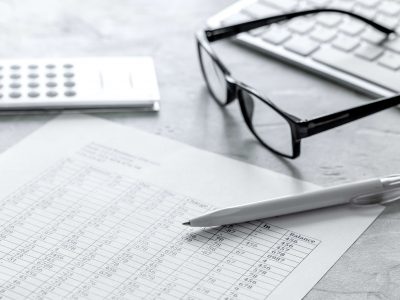
At the beginning of the quarter, you restated your inventory, valued at its original cost of $100,000. We now have the closing inventory at cost and can use the standard formula to calculate the cost of sales. The cash flow statement tracks the real movement of money in and out of your business. Imagine you own a small retail store selling yarn and kniwtting accessories. You use a standard 50% markup on all products, regardless of whether it’s a luxury yarn or a set of needles.
Overview of the LIFO Retail Inventory Method
- The cost accounting method calculates your inventory based on the price it costs you to buy them.
- The retail inventory method is an accounting method used to estimate the value of a store’s merchandise.
- They’re buying parts for customer orders, grabbing coffee for the team, and restocking shelves—often without a streamlined receipt submission process.
- Depending on the type of inventory you sell, you may be able to use the simpler retail method to calculate the cost of goods sold and the cost of your ending inventory.
- But depending on the needs of your business, the drawbacks may outweigh the speed and ease of the retail method.
The total inventory value of the company gets calculated by the particular method. There are many stores and the companies that can use the inventory method quite economically with some specific identification. Its main purpose is to help business owners gauge their company’s performance and needs from month to month. While the inventory costing and retail methods have their strengths, the choice between them depends on your business’s needs. The inventory costing method offers more precision, which is crucial for companies with significant price fluctuations.
Advantages of LIFO
The RIM lets you make an approximation of the worth of your inventory without having to physically count it. Understanding retail accounting is critical to managing your inventory effectively, and using the right methods and strategies can make all the difference. In today’s fast-paced business world, relying on outdated processes won’t cut it. Investing in inventory management software can transform how you track your inventory.
Pros of retail accounting
Some of net sales the balls might have been purchased at $0.10 each, and some at $0.12 each. There’s really no way of knowing which balls were purchased at which price, and so the retailer will take a weighted average and spread the average cost over all the existing inventory. The weighted average method of inventory costing is often used when inventory is not perishable but stock can still easily be rotated or intermingled. Starting your own business is hard enough without worrying about doing your own accounting. Skynova has accounting software that can make things like budgeting much easier and quicker. We’ll help you track your sales and create professional-looking financial reports.

Step 1: Gather cost and retail information
Under FIFO, when a customer comes in and buys a sweater, you record the cost of that sweater as $40 (from the older batch), even if physically you’re just pulling one from the shelf. In this guide, we’ll break down what retail accounting is, how it works, and how to ensure your system works for you–not against you. The retail method becomes more complicated when there are subsequent markups and markdowns to the initial retail price. These adjustments can be dealt with using either the Conventional Method or Average Cost Method.
- Essentially, the retail method tracks sales, COGS, and inventory at their retail value before making an adjustment to estimate the actual costs.
- This is the primary reason companies use the Retail method to estimate COGS.
- Companies that sell products with unique values should use this strategy.
- Many business owners misunderstand retail accounting, thinking it’s all about bookkeeping.
- In short, you should be aware of the limitations of the retail method, and only use it for those situations in which the preceding issues do not arise.
- It is said that if the retailers who sell variegated items purchase the items at prices that are of low unit, retail method is just apt for them.

Our editorial team independently evaluates and recommends products and services based on their research retail accounting and expertise. It is accurate only when all pricing across the board is the same and all pricing changes occur at the same rate. The central point of this method is estimating the retailer’s ending inventory balances. For this method, the retail amounts and the related cost amounts should be available for beginning inventory and purchases. That’s a bonus for retailers, who might be worried about having to pay staff to do stock checks while keeping the doors closed. In fact, calling it retail accounting makes it sound as if there is a special discipline of accounting, especially for retailers.
Inventory Costing Methods: Guide to Choose the Best Approach
Barcode scanning is a quick and reliable way to keep track of your inventory. Imagine a busy clothing store where employees need to process new bookkeeping for cleaning business shipments quickly. Using barcode scanners, they can instantly update the inventory system with the latest items as they arrive.

LIFO remains a rare accounting method worldwide but has significant popularity in the United States due to tax benefits that emerge during periods of inflation. HashMicro’s retail accounting software is the top digital solution in the Philippines for optimizing inventory value and cost. It offers advanced features that streamline stock management, save time, reduce waste, and boost profitability. Accountants in a retail store can offer inventory management systems that help track stock levels, analyze sales trends, and prompt timely restocking to maintain smooth operations. The first step in using the retail accounting method is to determine the cost-to-retail ratio you will use.
However, if the markup percentage varies greatly, such as 10%, 25% or 40%, then it’s more difficult to use the retail method accurately. Under the retail inventory method, the cost to retail ratio is now be used to calculate the closing inventory at cost. Your balance sheet lists what you own (assets), what you owe (liabilities), and what’s left over (owner’s equity) at a given point in time. Even businesses that choose to use the retail method during the year generally will do a physical count at the end of the year and apply a cost flow assumption to arrive at the actual cost of inventory. In this case, it would end up being $4.75 divided by 70 dice, or approximately 7 cents per die. You know you sold 50 dice, so you match the number of items sold to the average cost of 7 cents, which is a total of $3.50 for the cost of goods sold and $1.40 for ending inventory.
